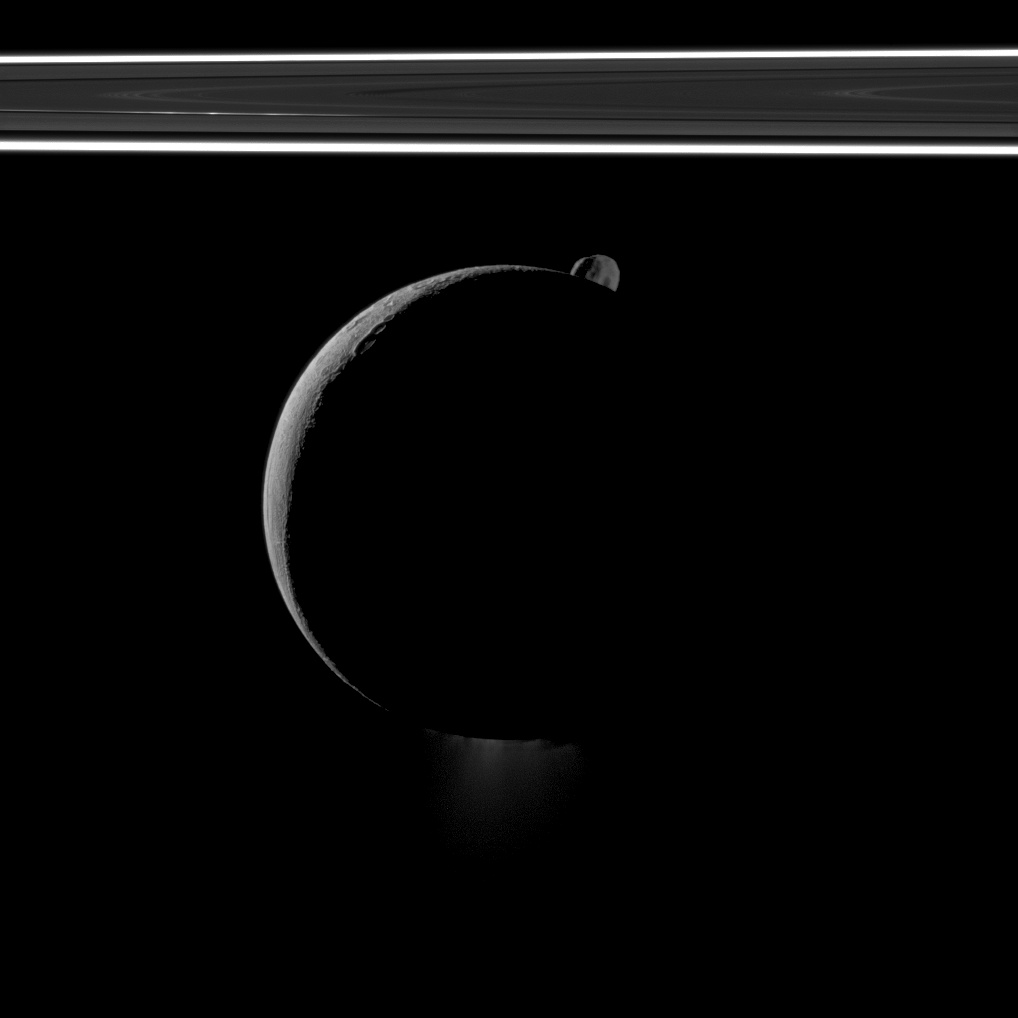[/caption]
Taken during the Cassini spacecraft's
October 1 flyby
of Saturn's ice-spewing moon, this image – released today – shows a crescent-lit Enceladus with southern geysers in action... and the much smaller Epimetheus peeking out from behind!
[caption id="attachment_90968" align="alignright" width="150" caption="Epimetheus"]
[/caption]
The 70-mile (113-km) -wide
Epimetheus
is dwarfed by its larger sibling Enceladus, which is 313 miles (504 km) in diameter... about the width of the state of Arizona.
One of the most reflective objects in the solar system, Enceladus appears to be casting some reflected light onto Epimetheus as well. (Image processors at the
Cassini Imaging Lab
have brightened the moons by a factor of 1.8 relative to the rings in order to bring out detail.)
Some bright clumps of material can also be seen orbiting within Saturn's rings at upper left, possibly stirred up by the movement of the shepherd moon
Pan
.
See this and more images
at the CICLOPS site here.
Image credit: NASA / JPL / Space Science Institute.
 Universe Today
Universe Today
